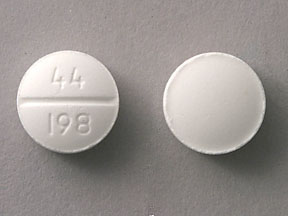Dimenhydrinate Dosage
Medically reviewed by Drugs.com. Last updated on Jan 30, 2024.
Applies to the following strengths: 50 mg/mL; 50 mg; 12.5 mg/5 mL; 12.5 mg/4 mL; 25 mg
Usual Adult Dose for:
Usual Pediatric Dose for:
Additional dosage information:
Usual Adult Dose for Motion Sickness
INJECTABLE: 50 to 100 mg IM or IV every 4 hours as needed; Maximum Dose: 400 mg within 24 hours.
ORAL:
- Immediate Release: 50 to 100 mg every 4 to 6 hours as needed; Maximum Dose: 400 mg within 24 hours.
- Extended Release: 100 mg every 8 to 12 hours as needed; Maximum Dose: 300 mg within 24 hours.
RECTAL: 50 to 100 mg every 6 to 8 hours as needed.
Use: Prevention and treatment of nausea, vomiting, dizziness, and/or vertigo associated with motion sickness.
Usual Adult Dose for Vertigo
INJECTABLE: 50 to 100 mg IM or IV every 4 hours as needed; Maximum Dose: 400 mg within 24 hours.
ORAL:
- Immediate Release: 50 to 100 mg every 4 to 6 hours as needed; Maximum Dose: 400 mg within 24 hours.
- Extended Release: 100 mg every 8 to 12 hours as needed; Maximum Dose: 300 mg within 24 hours.
RECTAL: 50 to 100 mg every 6 to 8 hours as needed.
Use: Prevention and treatment of nausea, vomiting, dizziness, and/or vertigo associated with motion sickness.
Usual Adult Dose for Nausea/Vomiting
INJECTABLE: 50 to 100 mg IM or IV every 4 hours as needed; Maximum Dose: 400 mg within 24 hours.
ORAL:
- Immediate Release: 50 to 100 mg every 4 to 6 hours as needed; Maximum Dose: 400 mg within 24 hours.
- Extended Release: 100 mg every 8 to 12 hours as needed; Maximum Dose: 300 mg within 24 hours.
RECTAL: 50 to 100 mg every 6 to 8 hours as needed.
Use: Prevention and treatment of nausea, vomiting, dizziness, and/or vertigo associated with motion sickness.
Usual Pediatric Dose for Motion Sickness
INJECTABLE:
- Neonate: Contraindicated.
- Older Than Neonate: 1.25 mg/kg OR 37.5 mg/m2 IM 4 times a day; Maximum Dose: 300 mg per day.
ORAL:
- Under Age 2 Years: Not recommended.
- Age 2 to 5 Years: 12.5 to 25 mg orally every 6 to 8 hours as needed; Maximum Dose: 75 mg within 24 hours.
- Age 6 to 11 Years: 25 to 50 mg orally every 6 to 8 hours as needed; Maximum Dose: 150 mg within 24 hours.
- Age 12 Years and Over: 50 to 100 mg orally every 4 to 6 hours as needed; Maximum Dose: 400 mg within 24 hours.
RECTAL:
- Under Age 2 Years: Contraindicated.
- Age 2 to 5 Years: 12.5 to 25 mg once; do not repeat dose except on the advice of a physician.
- Age 6 to 7 Years: 12.5 to 25 mg every 8 to 12 hours as needed.
- Age 8 to 11 Years: 25 to 50 mg every 8 to 12 hours as needed.
- Age 12 Years and Over: 50 mg every 8 to 12 hours as needed.
Use: Prevention and treatment of nausea, vomiting, dizziness, and/or vertigo associated with motion sickness.
Usual Pediatric Dose for Vertigo
INJECTABLE:
- Neonate: Contraindicated.
- Older Than Neonate: 1.25 mg/kg OR 37.5 mg/m2 IM 4 times a day; Maximum Dose: 300 mg per day.
ORAL:
- Under Age 2 Years: Not recommended.
- Age 2 to 5 Years: 12.5 to 25 mg orally every 6 to 8 hours as needed; Maximum Dose: 75 mg within 24 hours.
- Age 6 to 11 Years: 25 to 50 mg orally every 6 to 8 hours as needed; Maximum Dose: 150 mg within 24 hours.
- Age 12 Years and Over: 50 to 100 mg orally every 4 to 6 hours as needed; Maximum Dose: 400 mg within 24 hours.
RECTAL:
- Under Age 2 Years: Contraindicated.
- Age 2 to 5 Years: 12.5 to 25 mg once; do not repeat dose except on the advice of a physician.
- Age 6 to 7 Years: 12.5 to 25 mg every 8 to 12 hours as needed.
- Age 8 to 11 Years: 25 to 50 mg every 8 to 12 hours as needed.
- Age 12 Years and Over: 50 mg every 8 to 12 hours as needed.
Use: Prevention and treatment of nausea, vomiting, dizziness, and/or vertigo associated with motion sickness.
Usual Pediatric Dose for Nausea/Vomiting
INJECTABLE:
- Neonate: Contraindicated.
- Older Than Neonate: 1.25 mg/kg OR 37.5 mg/m2 IM 4 times a day; Maximum Dose: 300 mg per day.
ORAL:
- Under Age 2 Years: Not recommended.
- Age 2 to 5 Years: 12.5 to 25 mg orally every 6 to 8 hours as needed; Maximum Dose: 75 mg within 24 hours.
- Age 6 to 11 Years: 25 to 50 mg orally every 6 to 8 hours as needed; Maximum Dose: 150 mg within 24 hours.
- Age 12 Years and Over: 50 to 100 mg orally every 4 to 6 hours as needed; Maximum Dose: 400 mg within 24 hours.
RECTAL:
- Under Age 2 Years: Contraindicated.
- Age 2 to 5 Years: 12.5 to 25 mg once; do not repeat dose except on the advice of a physician.
- Age 6 to 7 Years: 12.5 to 25 mg every 8 to 12 hours as needed.
- Age 8 to 11 Years: 25 to 50 mg every 8 to 12 hours as needed.
- Age 12 Years and Over: 50 mg every 8 to 12 hours as needed.
Use: Prevention and treatment of nausea, vomiting, dizziness, and/or vertigo associated with motion sickness.
Renal Dose Adjustments
Data not available.
Liver Dose Adjustments
Patients with Hepatic Impairment: Use with caution.
Dose Adjustments
Pediatric Patients: Discontinue use if paradoxical excitation (restlessness, nervousness, hallucinations, delirium, and/or seizures) occurs.
Dialysis
Data not available.
Other Comments
Administration Advice:
- INJECTABLE: Dilute before IV administration; consult the manufacturer product information for dilution instructions.
- INJECTABLE: For IV administration, administer the drug slowly over 2 minutes.
- INJECTABLE: Do not administer intra-arterially.
- INJECTABLE: Inspect the drug visually for particulate matter and discoloration prior to administration.
- ORAL: To prevent motion sickness, the first dose should be taken at least 30 minutes to 1 to 2 hours before starting activity.
- RECTAL: For ease and comfort, smooth any edges prior to use.
Storage Requirements:
- Consult the manufacturer product information.
IV Compatibility:
- Consult the manufacturer product information.
General:
- Some formulations of this drug may be available only as special order products compounded at pharmacies with patient-specific dosing.
- Parenteral therapy is indicated when oral or rectal therapy is inappropriate.
- OVERDOSAGE: There is no specific antidote; consult the manufacturer product information for possible treatment options.
Patient Advice:
- If using this drug regularly, take a missed dose as soon as possible; however, skip the missed dose if it is almost time for the next dose.
More about dimenhydrinate
- Check interactions
- Compare alternatives
- Pricing & coupons
- Reviews (80)
- Drug images
- Side effects
- During pregnancy
- Drug class: anticholinergic antiemetics
- Breastfeeding
Patient resources
- Dimenhydrinate drug information
- Dimenhydrinate Chewable Tablets
- Dimenhydrinate Tablets
- Dimenhydrinate Injection
Other brands
Dramamine, Dramamine for Kids, Driminate, Triptone, Travel-Eze
Professional resources
Related treatment guides
See also:
Further information
Always consult your healthcare provider to ensure the information displayed on this page applies to your personal circumstances.


